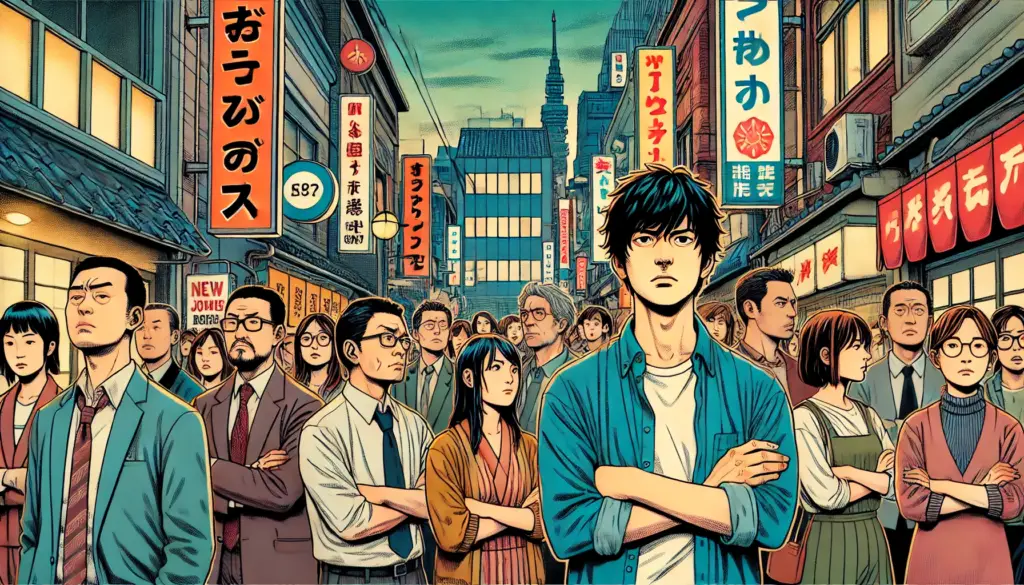
Kawaguchi City in Saitama Prefecture, once stigmatized as a “Yakuza town,” has undergone a striking transformation over the past few decades. Once known for crime syndicates and industrial decline, the city has now become one of Japan’s most prominent hubs for foreign residents. Today, Kawaguchi is attracting national attention as both a success story of multicultural coexistence and a flashpoint for the challenges Japan faces in managing foreign labor and community integration.
In this article, we will explore the history of Kawaguchi’s transformation, the reasons behind the surge in foreign residents, the social frictions emerging in daily life, and why many policymakers are watching Kawaguchi closely as a case study for Japan’s immigration future.
Kawaguchi’s Past: From Yakuza Stronghold to Economic Decline
During the postwar era, Kawaguchi developed as a center of heavy industry, particularly casting and metalworks. However, as Japan’s economy shifted in the 1970s and 1980s, factories closed and unemployment rose. This decline coincided with the rise of organized crime groups, and Kawaguchi gained an infamous reputation as a “Yakuza town.”
For many years, the city carried a negative image—unsafe streets, abandoned industrial zones, and struggling communities. However, this vacuum of opportunity eventually made Kawaguchi an attractive destination for newcomers, especially foreign workers seeking affordable housing and jobs in small-scale manufacturing and construction.
The Rise of a Foreign Resident Community
In the late 1980s and 1990s, Japan’s revised immigration policies opened the door for “Nikkei” Brazilians and Peruvians—descendants of Japanese emigrants—to work in the country. Kawaguchi became one of the first cities to welcome them. Later, the influx expanded to include Chinese, Vietnamese, Nepalese, and other groups.
Today, Kawaguchi is sometimes nicknamed “Little Asia.” The foreign population has surged, and in certain districts, non-Japanese residents make up more than 20–30% of the community. International supermarkets, halal restaurants, and multilingual signage are now common sights.
This diversity has brought vibrancy, but also a sense of unfamiliarity for longtime Japanese residents, some of whom feel that their city has changed “too quickly.”
Friction Points: Why Kawaguchi’s Foreign Community Faces Criticism
Despite the city’s growing multicultural identity, Kawaguchi has also been the stage for social tensions. Several issues often make headlines:
- Noise and Lifestyle Differences 🏠
Residents sometimes complain about late-night gatherings, cooking smells, or cultural practices that clash with local norms. - Waste Disposal Rules 🗑️
Japan’s strict garbage separation rules can be difficult for newcomers to understand. In Kawaguchi, disputes over trash sorting have become symbolic of deeper cultural gaps. - Education and Language Barriers 📚
Local schools are struggling to provide adequate support for children who do not speak Japanese fluently, placing pressure on teachers and resources. - Public Safety Concerns 🚔
While crime rates are not necessarily higher, the perception of foreign-linked crime has been amplified in media and political discourse, fueling stereotypes.
These frictions have been magnified by social media and political debates, making Kawaguchi a hot topic nationwide.
Kawaguchi as a National Case Study
Japan is one of the most rapidly aging countries in the world, and labor shortages are an urgent problem. To sustain its economy, the government has been quietly expanding work visa programs for foreign nationals. The introduction of the Specified Skilled Worker (Tokutei Ginou) visa in 2019 marked a major step toward institutionalizing foreign labor in key industries such as caregiving, construction, and food services.
Kawaguchi’s experience provides a preview of the opportunities and challenges that Japan may face as it welcomes more foreign residents. On one hand, the city demonstrates how international communities can rejuvenate aging neighborhoods, sustain local industries, and enrich cultural life. On the other, it highlights the frictions that arise when support systems, language education, and integration policies lag behind demographic change.
Why Kawaguchi Matters in the Immigration Debate
The “Kawaguchi problem” is not just about one city—it has become a mirror reflecting Japan’s broader dilemma:
- Can Japan maintain its cultural identity while embracing multiculturalism?
- How much responsibility should local governments bear in supporting integration, compared to national policy?
- Is Japan prepared to handle social tension as the number of foreign workers inevitably increases?
Kawaguchi has become a test case. If the city can strike a balance between coexistence and social harmony, it could serve as a model for other regions. If not, it risks reinforcing anti-immigrant sentiment in a country that has historically resisted large-scale immigration.
A Future of Coexistence or Division?
Looking ahead, Kawaguchi will remain under close observation by academics, policymakers, and the public. The city is experimenting with multilingual administrative services, community events that bridge cultural divides, and school programs that integrate children from diverse backgrounds.
At the same time, nationalist voices in Japan continue to portray Kawaguchi as an example of what “should not happen” to Japanese cities. This tension between optimism and fear underscores the stakes involved.
For Japan, a country facing population decline and economic pressure, the Kawaguchi case is a reminder that immigration is not just about filling labor gaps—it is about rethinking what kind of society the nation wants to become.
Conclusion
Kawaguchi’s story is one of transformation: from a troubled Yakuza town to a bustling, multicultural hub. It is also a story of struggle, as residents—both Japanese and foreign—navigate new realities of coexistence.
Whether Kawaguchi becomes a model of integration or a cautionary tale will depend on how effectively the city, and Japan as a whole, can adapt its policies and attitudes. For now, Kawaguchi stands as a microcosm of Japan’s future, a living experiment in what it means to open the door to the world. 🌏



















































